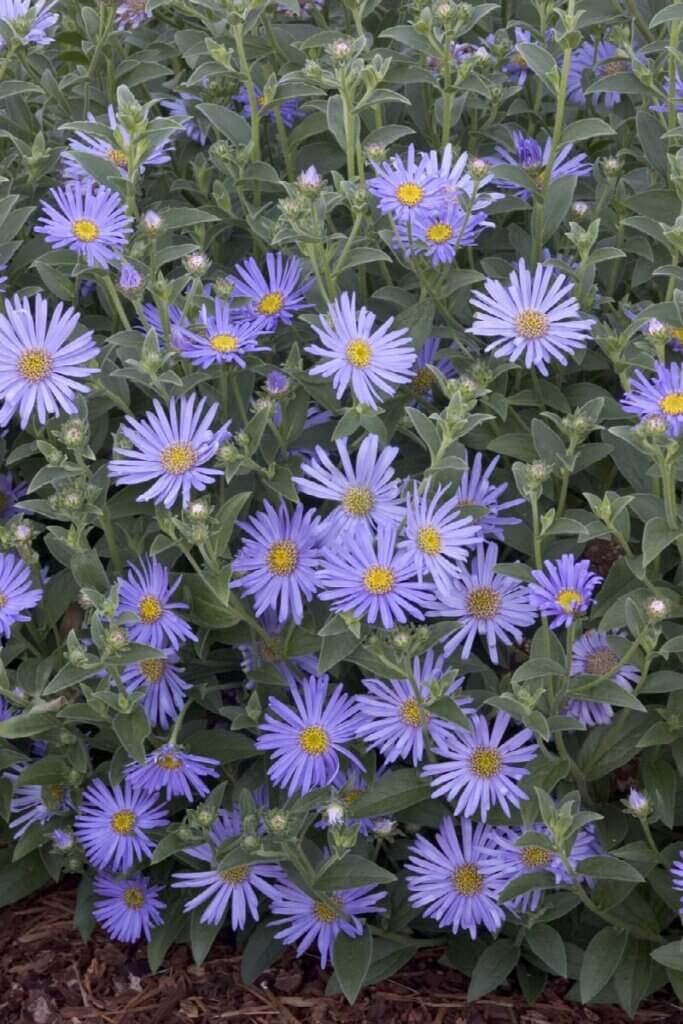Native Plant Sale Saturday, June 1, 10 am – while supplies last
Not only are native plants a beautiful addition to your garden, but they are also well adapted to our local growing conditions and can better support native wildlife and pollinators. This event includes Native Plant Sale
Volunteer Open House – find out about the many volunteer opportunities available
Nature Center’s Used Book Sale.
Native perennial plants are lovely to look at, but more importantly, they fill a vital role in nature. Native butterflies and other insects need native plants for food and reproduction. To have success with garden and landscape planting, match the plants to the soil, light, and area. There are great plants for every condition. With creative placement, you can achieve astounding gardens that are both beautiful in their own right and provide habitat. Use a palette of plants that can survive similar conditions and similar stresses. Plants that grow together in the wild or similar situations. Doing this makes it easy to match the plants to the site.
When Planting:
- Use existing soil
- Cause as little disturbance of soil as possible
- Bigger is not always better – choose plants that can grow on your site
- Check the ultimate width of plants and space accordingly
- Layout all your layers and then plant
Plant close or add seeds of short-lived plants, such as partridge pea and biennial Black-eyed Susan, or mulch lightly. This will keep the weeds down until the plants are established.
The following plants will be available for purchase at Beaver Lake Nature Center on June 1st.
Blue Cohosh, Caulophyllum thalictroides
Woodland phlox, Phlox divaricata
Maidenhair Fern, Adiantum pedatum
Blue Mist Flower, Conoclinium coelestinum
Sweet Joe Pye Weed, Eutrochium purpureum
Red Cardinal Flower, Lobelia cardinalis
New York Ironweed, Vernonia noveboracensis
Native Perennials for Pollinator Gardens
Common milkweed, Asclepias syriaca
Butterfly Weed, Asclepias tuberosa
Ox eye Sunflower, Heliopsis helianthoides
New England Aster, Symphyotrichu novae-angliae
New York Aster, Symphyotrichum novi-belgii
Top Woodland Wildflowers
A woodland garden can be developed anywhere there is shade. Shade can be provided by a wooded area, a lone maple tree, a grouping of trees, or the north side of a house. The amount of shade you have will help determine what plants you can grow. Woodland plants also need soil rich in organic matter. If your soil is lacking organic matter you can add leaf compost, peat moss, or well-rotted manure to the soil. Our native woodland plants are unusual plants that play key roles in the natural local community. They provide food and shelter for native insects, butterflies, and birds. Planting woodland wildflowers in our gardens makes them more ecologically friendly.
Wild Ginger, Asarum canadense
Wild ginger is a very nice groundcover. Attractive heart-shaped leaves over brown flowers. Blooms in May. The plant spreads and forms a dense mat. Plant Wild Ginger with other ground covers such as Green and Gold, Bloodroot, Foam Flower, and Woodland Phlox. Grows about 8 inches high. Woodland soil, shade. Plant with early spring bloomers. The leaves last until late fall. Grows 6 to 10 inches tall.
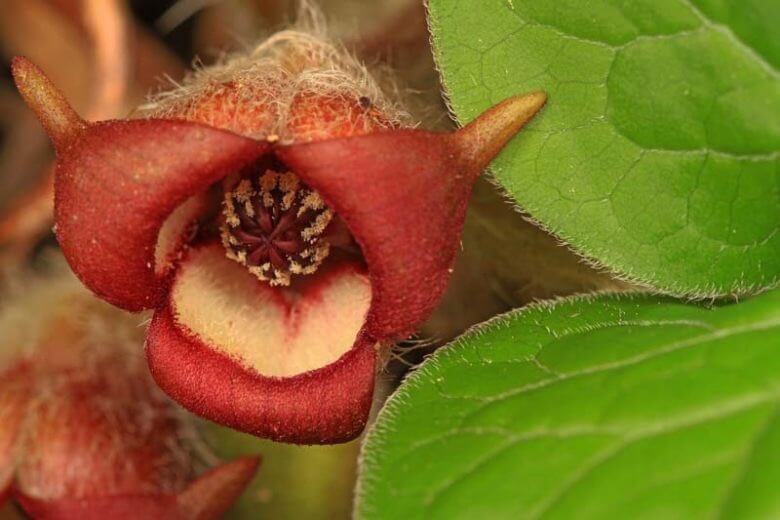
Blue Cohosh, Caulophyllum thalictroides
Purplish green foliage emerges in the spring followed by greenish-brown flowers. Bright blue, berry-like fruit persists into late summer. Plants may go dormant early in a dry year. Grows 12 to 18 inches high by 2 feet wide. Does best in humus-rich soil, partial to full shade.
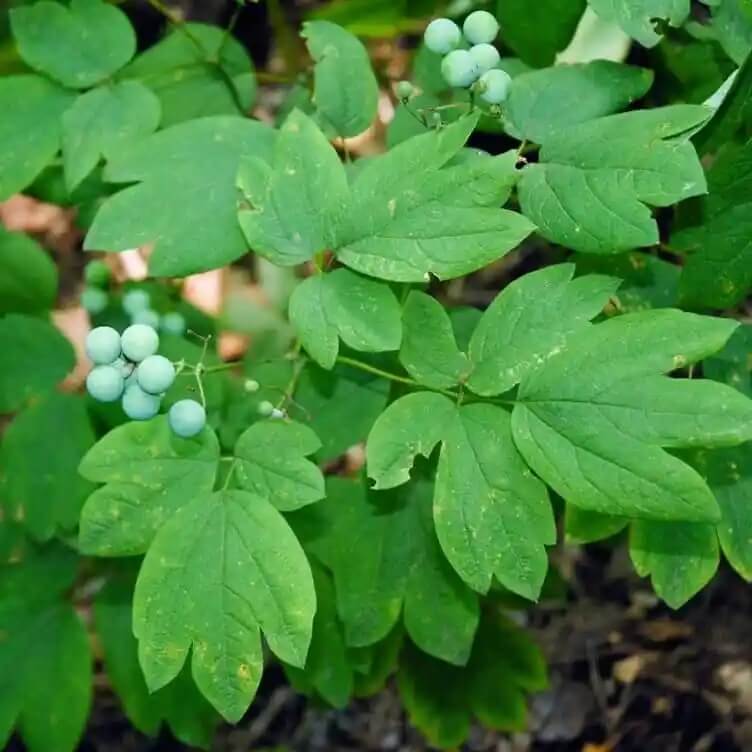
Woodland Phlox, Phlox divaricata
Woodland Phlox is a magnificent ground cover with fragrant blossoms. The foliage is evergreen and shiny. The plants grow from 8 inches high, with the flowers rising above the foliage 10 to 16 inches. Great replacement for invasive Vinca minor. Grows in shade or semi-shade. Hummingbird moths love this plant.
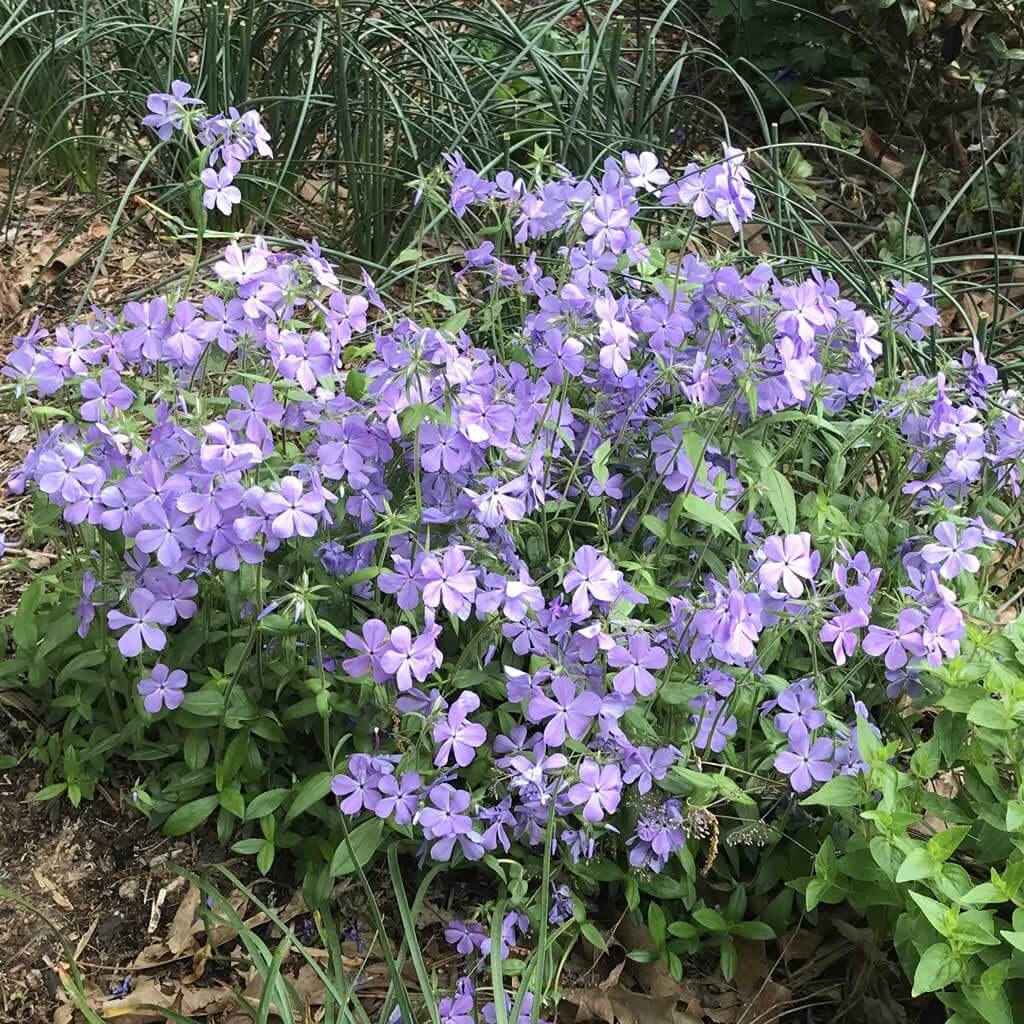
Top Ferns
Ferns are a beautiful, intricate part of your garden. They provide structure and color throughout the growing season. There are ferns for almost any situation in your garden. These plants provide cover for many animals.
MaidenHair Fern, Adiantum pedatum
Maidenhair Fern is a delicate, exquisite, fan-shaped fern that is very distinctive in appearance. This fern spreads slowly by creeping rhizomes. It can grow to 20 inches, but size will vary with the amount of light it receives. It likes rich soil. Maidenhair fern is very shade tolerant but does well in light shade. Frequently found on banks.

Top Wet Area Plants
These are plants that will tolerate very moist to wet areas. Many of them will grow in drier soils. Make areas you cannot mow into pollinator havens. Plant rain gardens and drainage ditches with these plants to help with water infiltration. A wet area is an opportunity for establishing a truly lovely garden that will provide much-needed habitat for bees, birds, frogs, and many other animals.
Blue mist flower, Conoclinium coelestinum,
Blue mist flower produces masses of wispy blue flowers from late summer to late fall. This interesting and prolific bloomer is a great pollinator plant, attracting bees and butterflies to the garden. Blue mist flower grows well in moist, rich soil, though it will tolerate partly dry soil. It takes sun or partial shade. This plant is rarely damaged by deer browsing. Grows 1 to 3 feet tall. It is truly a stunning plant.
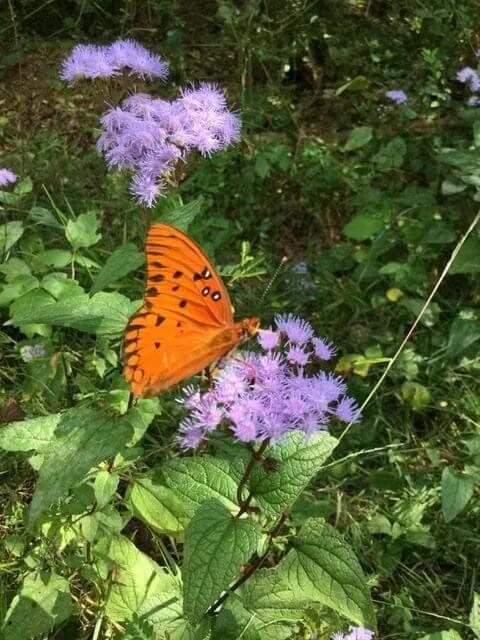
Sweet Joe Pye, Eutrochium purpureum
An excellent butterfly plant with umbels of pink flowers. Begins blooming in late July through September. Joe Pye Weed makes a wonderful addition to a garden, meadow, or wet meadow planting. The color of a mass planting in the late summer to early fall is awe-inspiring. Joe Pye Weed grows 3 to 6 feet tall and 3 to 4 feet wide. It grows taller in moist soil but can tolerate drier soils once it is established. Plant in semi-shade or sun. Very versatile as far as conditions it will tolerate. Sweet Joe Pye has a more open flower cluster and greener stems than Joe Pye weed.
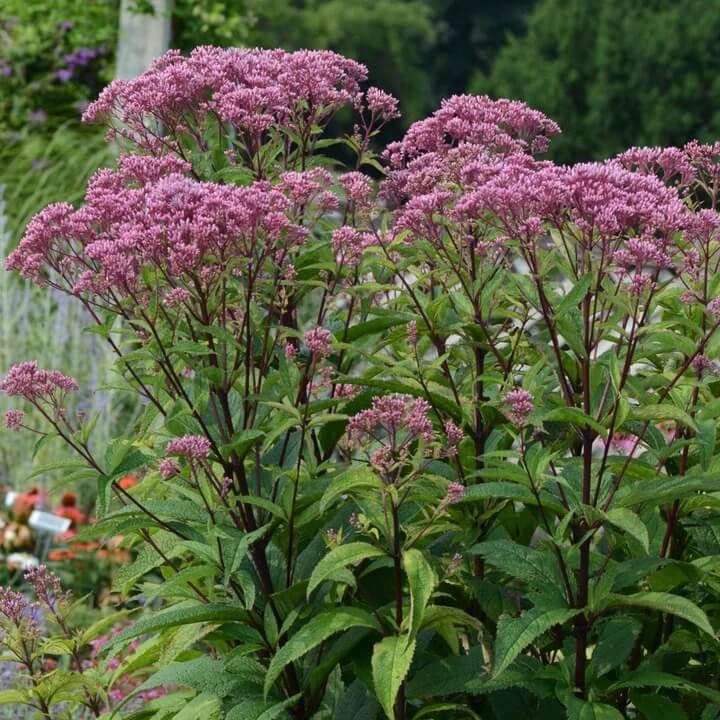
Red cardinal Flower, Lobelia cardinalis
Stunning bright red, elongated cluster of tubular flowers. Hummingbirds love it! Red Cardinal Flower prefers moist soil high in organic matter but will do well in your garden in soil that is well amended. 2 to 4 feet tall and 1 foot wide. Plant in sun or shade in moist soil. Flowers July through August
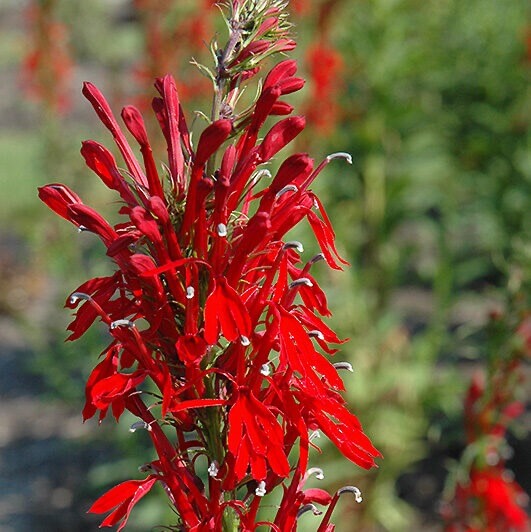
Blazing Star, Gay Feather, Liatris spicata
Pink-purple spikes of flowers. Attracts butterflies and other insects. Gay Feather prefers moist, fertile soils; good drainage is important, particularly in winter. Will tolerate dry summer soils. Full sun to some light shade. Great for the meadow garden, woodland edge, or bog garden. The plant grows to about 2 feet tall.
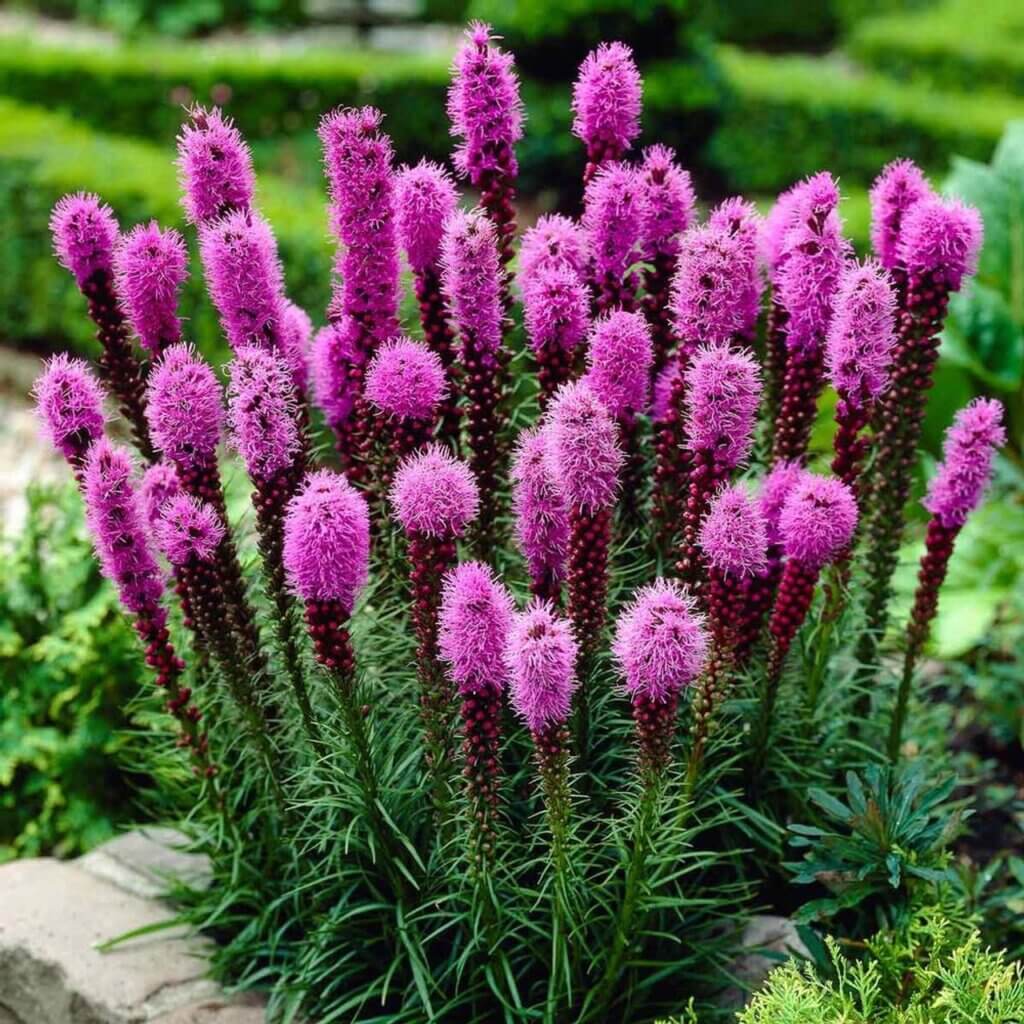
New York Ironweed, Vernonia noveboracensis
New York Ironweed is a tall perennial that will attract many butterflies. Clusters of deep lavender to violet flower heads. Together, the clusters form a loose spray. Tolerates a wide range of soils, but prefers rich, moist, slightly acidic soils. Blooms late summer into fall. Lance-shaped leaves (6 to 8 inches long). Flowers give way to rusty seed clusters. The source of the common name has been varyingly attributed to certain “iron-like” plant qualities including the tough stems, the rust-tinged color of fading flowers, and the rust-colored seeds. Birds will eat the seeds. Grows 4 to 6 feet high with a 3 to 4-foot spread.
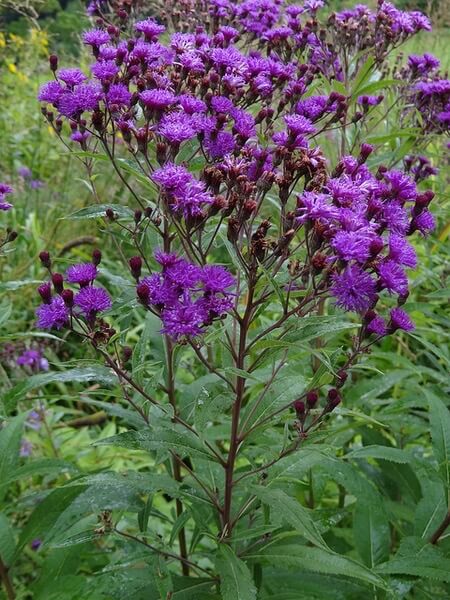
Top Native Perennials for Pollinator Gardens
Pollinators, including bees, beetles, flies, butterflies, moths, hummingbirds, and even bats, provide a valuable service. They pollinate the plants that we use for food, as well as the plants we use to beautify our yards. We can help them by providing native plants. Many insects need specific host plants to lay their eggs, use for food, and the larvae. Use a palette of plants that attract pollinators to create beautiful and interesting gardens. The colors, shapes, and textures of the plants are an attractive addition to your garden. In addition, you will create an opportunity to enjoy watching the butterflies, moths, birds, and other wildlife that your native habitat attracts.
Remember to have something always in bloom. Many ground covers bloom in the spring and provide early color. Here is a bloom time chart to make planning easier.
Common Milkweed, Asclepias syriaca
This is the common roadside plant that Monarch Butterflies use as a host plant. They lay their eggs on the underside of the leaves. The caterpillars eat the leaves. Common Milkweed has a very pleasant fragrance and smells spicy. Common Milkweed is rhizomatous; it is also aggressive and therefore may not be suitable for small gardens. It grows 4 feet tall and prefers sun, but will grow in most soils.
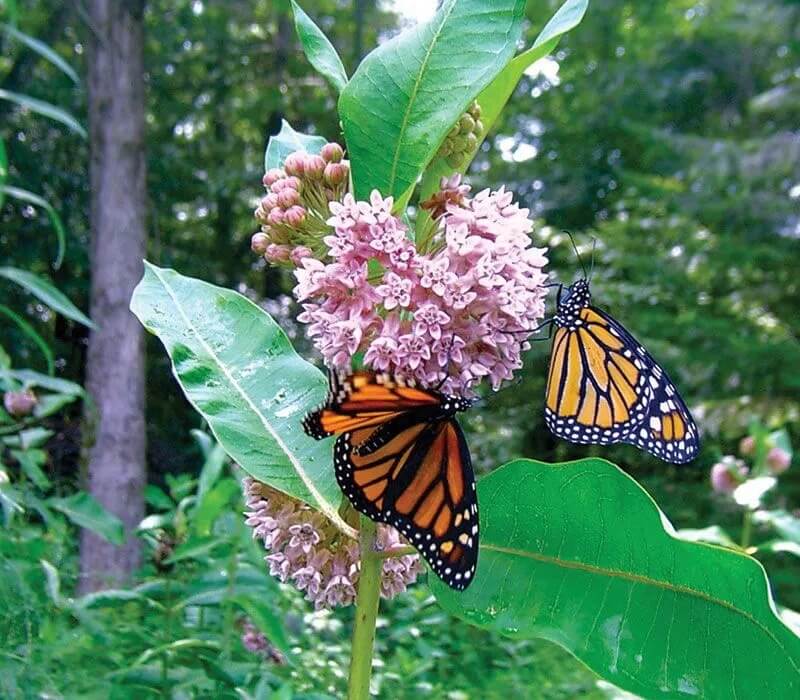
Butterfly Weed, Asclepias Tuberosa
Butterfly Weed has very vibrant bright orange flowers. It blooms in mid-summer. The leaves are bright green and linear in shape. It is a host plant for the Monarch Butterfly, which makes it a very valuable plant. Butterfly Weed grows best in full sun, in soil that does not have much organic matter in it. It also likes very dry soil. It grows from a tap root so plant it where it will be happy. It is difficult to move once established.
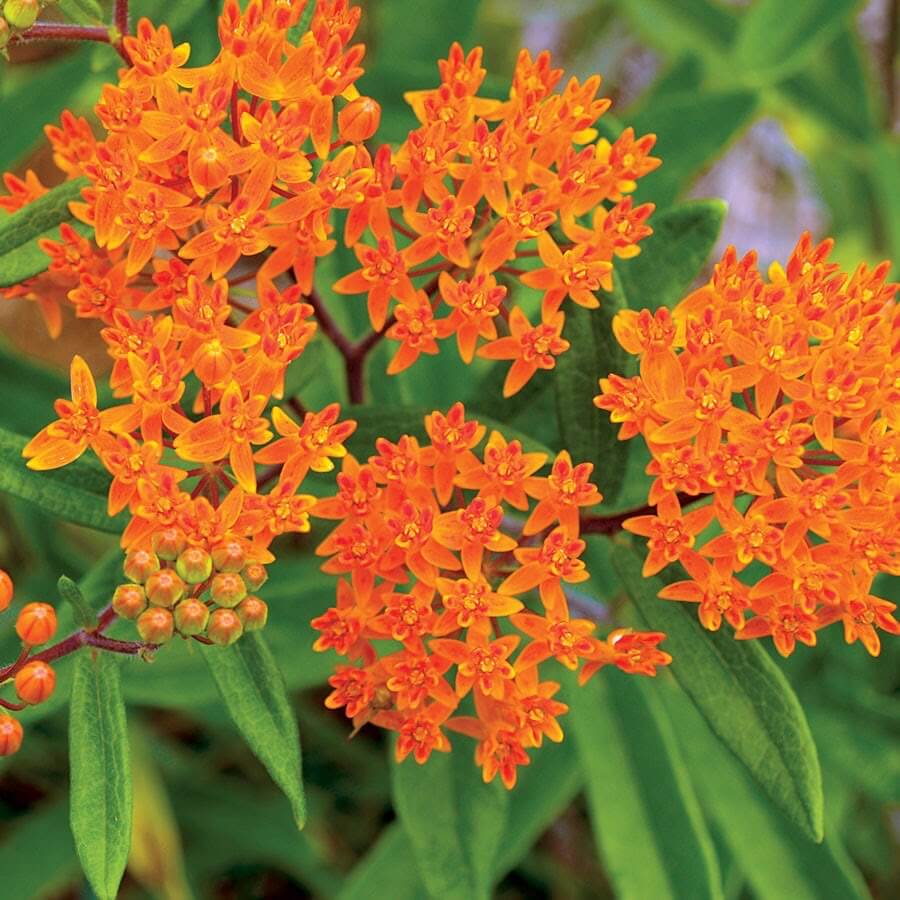
Ox Eye Sunflower, Heliopsis helianthoides
Ox Eye Sunflower has golden yellow flowers that resemble small sunflowers that cover the plant in summer. It grows 3 to 4 feet tall. The plant flowers from July to September. It is an excellent cut flower that will grow in sun to part shade, in dry to semi-dry soil. It is a great pollinator plant that is used by insects for nectar. It spreads about 4 feet.

Red Monarda, Bee balm, Monarda didyma
Bright scarlet flowers attract hummingbirds and butterflies. The plant has a nice minty smell, which helps to deter deer. Should be part of any meadow garden. Likes part shade to sun and moist soil. Spreads reliably, monardas can spread quickly in rich soil. Plant with equally tough plants like Black Eyed Susan, Asters, and Ox-eye Sunflower. Grows 2-3 feet tall. Flowers in July for a long period.
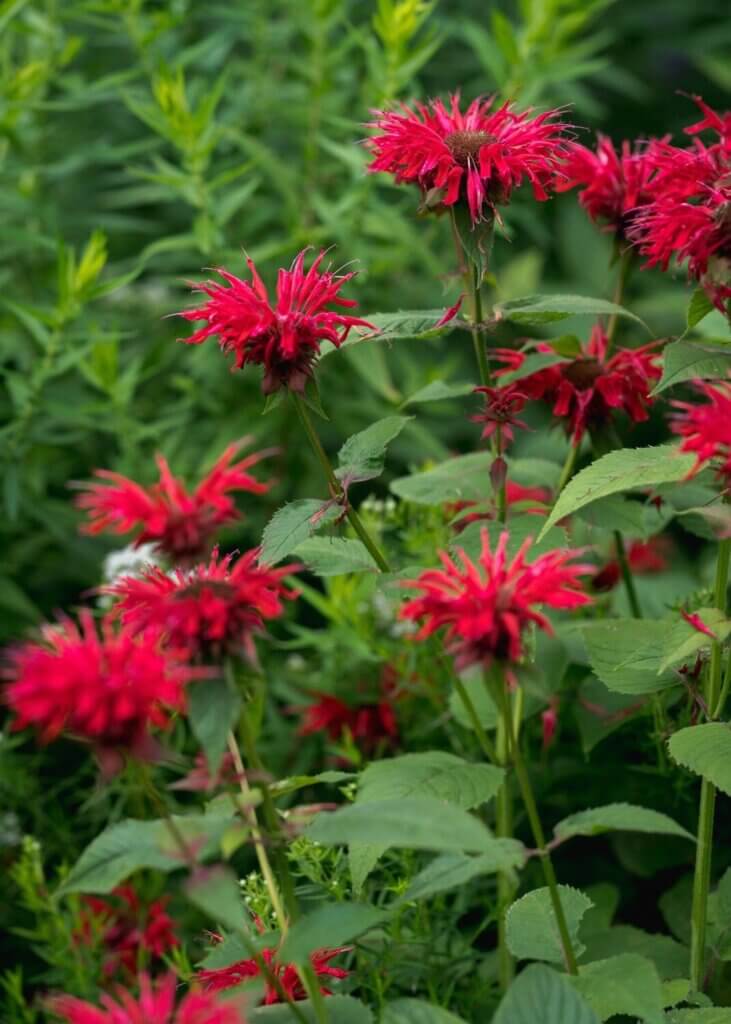
New England Aster, Symphyotrichum Novae-angliae
This plant provides a showy display of violet to purple flowers from late August to frost. Grows 3 to 4 feet tall by 3 feet wide. It prefers moist, rich soil, but will tolerate many conditions. Grows in full to partial sun. This plant provides nectar for honeybees and other insects, such as butterflies. New Eng- land Aster is also a larval food for the Pearl Crescent Butterfly. You can leave the seed heads in the fall for the birds.
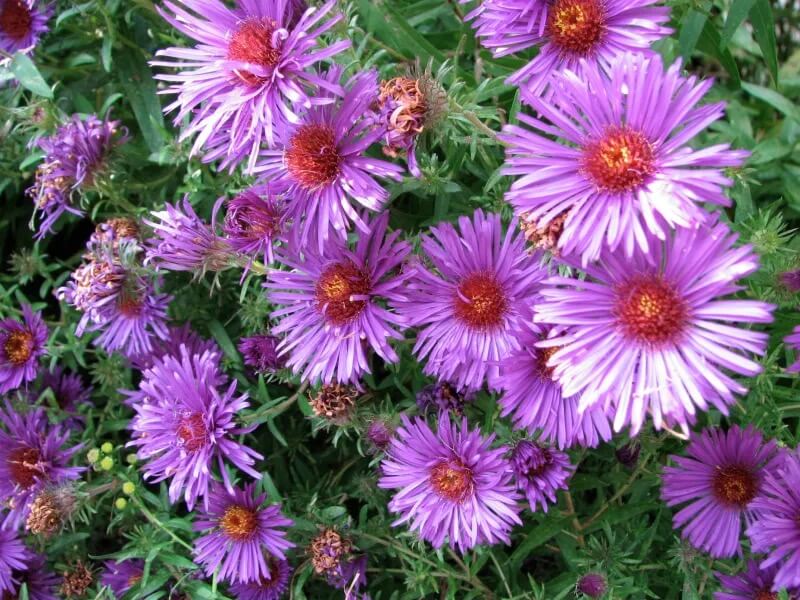
New York Aster, Symphyotrichum novi-belgii
New York Aster likes the sun but also thrives in filtered shade. It is a very versatile plant. The plant grows to about 3 to 4 feet tall by 3 feet wide but you can control the height by cutting it back in June. These plants are also great sources of food for hummingbirds and butterflies. New York Aster is a larval source for the Pearl Crescent Butterfly. Grows in wet to dry soils.
